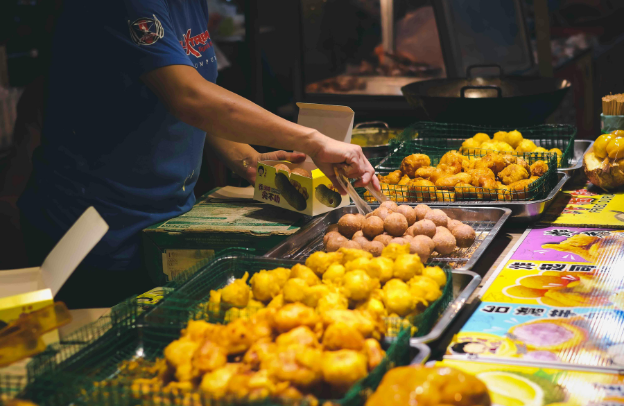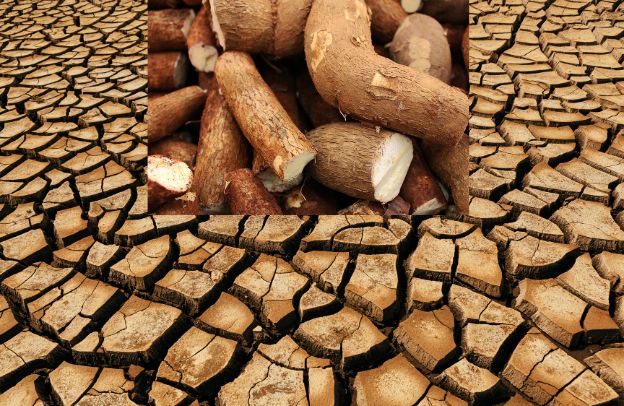Market Structure, Conduct, Channel, and Margin of Dry Season Okra Vegetable in South-Eastern Nigeria

Dr. Ikechi Agbugba | Contributor on Agribusiness Topics
Agbugba Ikechi Kelechi, Nweze Noble Jackson, Achike Anthonia Ifeyinwa and Obi Ajuruchukwu. Department of Agricultural Economics, University of Nigeria, Nsukka, Enugu State, Nigeria, West Africa. Department of Agricultural Economics & Extension, University of Fort Hare, Alice, Eastern Cape, South Africa
Abstract
The study was carried out with four purposes. The first objective included the socio-economic characteristics of dry season Okra marketers; the second described the marketing channel; the third analysed the structure and conduct of the market; and the fourth determined the marketing margin for dry season Okra marketers.
Want to learn more about storytelling? Start by downloading the first chapter of The Storytelling Mastery.
Multi-stage sampling technique was adopted for the study. 111 Okra marketers were selected and structured questionnaires administered to them. Descriptive statistics, Gini coefficient model and Marketing margin analysis were used for analyzing the objectives.
Most of the Okra marketers interviewed were females indicating that these were doing active dry season marketing of Okra vegetable in the study area. Eight (8) marketing channels were identified. From the Gini coefficient model, which determined the level of concentration in relation to the structure of the markets of wholesale and retail markets, there were no barriers to entry and exit in and out of the markets during the dry season period.
There was a high percentage (93%) in the marketing margin of the marketers. Government’s indispensable role in building and repairing worn out roads, as well as constructing new ones; which will in turn bring about reduction in the cost of transportation and minimization of vegetable losses in the marketing process should be encouraged. Keywords: Okra, dry season, market, marketing, marketers.
Introduction
Okra is an important fruit vegetable crop belonging to the genus Abelmoschus, and family Malvaceae. It has two main species: Abelmoschus esculentus (L.) Moench. and Abelmoschus caillei (A. Chev.) Stevels [1].
It originates probably from East Africa and widely distributed in the tropics, subtropics and warmer portions of the temperate region [2]. It features prominently in vegetable markets in the South-eastern Nigeria [3].
The economic importance of Okra cannot be overemphasized. It contains carbohydrate, proteins and vitamin C in large quantities and plays a vital role in the human diet as young immature fruits are important fresh fruit vegetable that can be consumed in different forms [4]. They could be boiled, fried or cooked.
In Nigeria, Okra vegetable is usually boiled in water resulting in slimy soups and sauces, which are relished. The fruits also serve as soup thickeners [5], [6]. The dried seed of Okra is a nutritious material that can be used to prepare vegetable curds, roasted and ground to be used as coffee additive or substitute. Okra mucilage is suitable for medicinal and industrial applications.
See also Agribusiness Marketing Strategy in 2024: Harnessing the Power of Storytelling to Drive Success
It has medically found application as a plasma replacement or blood volume expander. Industrially, Okra mucilage is usually used in to glace certain papers and also useful in confectionery among other uses [7], [8].
Worldwide production of Okra as fruit vegetable is estimated at 6 million tonnes per year. In West
Africa, it is estimated at 500,000 to 600,000 tonnes per year [9]. In Nigeria, there are two distinct seasons for Okra, the peak and the lean seasons. During the lean season, Okra fruit are produced in low quantities, scarce and expensive to get [10].
Marketing of Okra during the dry season is complex due to its perishable and seasonal nature as well as its bulkiness [11]. The marketing channel is an important part of its cost, and its location to the market may shorten the path of distribution from producers to consumers and makes the marketing process simple and efficient [12].
Its marketing is gradually developing as many people develop interest to engage in the enterprise as market intermediaries. Proper marketing is necessary to arrest wastage being experienced during the dry season period [13].
Okra marketing during the rainy season when all the crops mature at about the same time, creates glut in the market due to the fact that many of the farmers and sellers do not have storage facilities, thereby leading to very low returns of the crop per hectare. Moreso, there is high economic return per hectare of Okra because the number of dry season marketers engaged in its marketing is reduced. In order words, the marketing efficiency becomes an important determinant factor to the performance of the industry.
This study therefore (i) analysed the socio-economic characteristics of dry season Okra marketers in the study area; (ii) described the marketing channel for dry season Okra in the study area; (iii) analysed the structure and conduct of dry season Okra market in the study area; and (iv) determined the marketing margin for dry season Okra marketers in the study area.
Methodology
The study was conducted in South-eastern Nigeria. Out of the five states which make up South-eastern Nigeria, Abia, Imo and Enugu states were randomly selected for the study. The area is situated east of River Niger and covering an area of 29,908 sq. km with population of about 16,381,729 persons [14] and lying on latitudes 50 and 70 75/ North and longitudes 60 85/ and 80 46/ East [15]. About 70% of the total population are peasant farmers cultivating arable crops and vegetables, and few dealing on cash crops like oil palm and cocoa [16].
The south-eastern states have contiguous characteristics in relation to vegetable production and marketing activities of selected indigenous vegetables (especially Okra) during the dry season.
Primary data which was used for this study was obtained through the use of structured questionnaires administered to the respondents. Two agricultural zones were selected from each of the 3 South-eastern states making it 6 agricultural zones in a whole.
Two markets were randomly selected from a list of major markets from the 2 agricultural zones previously selected. This gave a total of 12 markets. Ten dry season Okra marketers were randomly selected from each of the markets, except 1 market where 9 marketers (i.e. 4 wholesalers & 5 retailers) were randomly selected for the study.
In all, a total of 38 marketers each was randomly selected from Abia and Imo states, whereas 35 marketers were chosen for Enugu state. This gave a total sample size of 111 respondents for the study.
Analytical Techniques
Descriptive statistics such as frequencies and percentages were used to analyze the socio-economic characteristics, conduct, and also describe the marketing channels of the respondents. Gini coefficient was used to examine the structure, while margin analysis for analyzing the marketers’ margins in the study area.
See also Transforming Africa’s Food Security Crisis into Agribusiness Prosperity
Gini coefficient was used to measure and examine concentration and degree of inequality of the marketers and then the structure of the market. Gini coefficient refers to a number or an index varying between zero and one; zero signifying perfect equality and one, perfect inequality.
Mathematically, Gini coefficient is represented by (1) below:
G1kkon1 Yk1 Yk Xk1 Xk (1)
where G = Gini coefficient; X = Number of dry season Okra marketers; Y = Trade volume or total sales; X = Cumulated percentage or proportion of the marketers; Y = Cumulated percentage or proportion of total sales or trade volume; n=Number of marketers; k = Number of marketers minus 1 (i.e. k = n-1).
Marketing margin analysis was employed to determine the margins of the marketers. The equation is represented below:
ForWholesalers:
- Wholsalesellingpricewholesalebuyingprice X 100 Wholesalebuyingprice 1
(2)
For Retailers:
- Retailsellingprice -Retailbuying price X100 RetailbuyingPrice 1
(3)
Results and Discussion
Socio-Economic Characteristics of Dry Season Okra Marketers
From the research analysis, it was discovered that females were the key players which comprised 94% of the wholesalers and 100% of the retailers. This implied that any improvement in infrastructure and marketing operations, processing as well as production, females will benefit solely since their roles are crucial and oftentimes interwoven.
The wholesalers (39%) and retailers (36%) fell within the age bracket 31-50 years. This implied that the marketers were in their active productive age. A greater percentage of the marketers that are married were wholesalers (73%), and 65% for retailers. Household sizes were generally larger among the wholesalers and retailers, where 84% and 80% have between 4 and 9 people in their families respectively.
However, this implies that most of the marketers were of child-bearing age between 31 and 40 years old. Majority (49%) of the respondents had formal education till secondary school level, 35% had primary education, while 11% had education till tertiary, while 5% of the respondents had no formal education.
Majority of the wholesalers and retailers who were primarily engaged in dry season marketing and accounted for 84% and 93% respectively, while 16% of the entire respondents were part-time marketers as 7% were engaged in teaching/civil service, 4% were involved in trading of other commodities, 1% were involved in farming activities as producers, while 1% were involved in artisanal works.
This implied that dry season Okra marketing is a major lucrative occupation, and hence, draws so many women into its marketing operations.
Structure and Conduct of the Market
This section sought to describe and analyze the structure of the dry season Okra market as well as their conduct.
Table1:GiniCoefficient for Dry SeasonOkra Wholesalers in South-Eastern Nigeria
| Percentages | |||||||
| ﹤1,000 | – | – | – | – | – | – | – |
| 1,000-9,999 | 3 | 5.4 | 3 | 5.4 | 13,000 | 0.41 | 0.00022 |
| 10,000- | 6 | 10.7 | 9 | 16.1 | 75,000 | 2.36 | 0.0025 |
| 20,000- | 10 | 17.8 | 19 | 33.9 | 220,000 | 6.91 | 0.012 |
| 30,000- | 5 | 8.9 | 24 | 42.8 | 158,000 | 5.15 | 0.0046 |
﹥39,999 32 57.2
= % of marketers multiplied by cumulative % of total sales
Source: Field Survey, 2011
The distribution of the marketers by their income or sales and the no of marketers in kg values in each category for 61 days were also presented. Sales volume on the other hand, refers to the value of Okra vegetable sold by the marketers at each level of the chain. Table 1 shows how Gini coefficient was derived.
Table 1 showed Gini coefficient as 0.49 implying that the concentration of market sales among Okra wholesalers was low. This was due to a large number of wholesalers competing with each other. This is an indication that there was no Okra wholesaler exercising control over the market price.
This is a typical feature of a purely competitive market structure, a sign of efficiency in the market. In other words, there is also a reflection of low level of income inequality from sales among the wholesalers.
From Table 2, the Gini coefficient (0.79) for Okra retailers represented a situation where powerful Okra retailers dominate the market, a sign of inefficiency in the market structure. From this computation, it can be deduced that there was significant inequality in the income from sales among retailers as against that of wholesalers as 0.49.
Hence, the Gini coefficient of Okra wholesalers indicated greater equality than that of the retailers and vice versa.
Table 2: Gini Coefficient for Dry Season Okra Retailers in South-Eastern Nigeria
Incomes from Number of Percentages of Cumulative Cumulative Total Sales (Y) % of Total XY
﹤1,000
1,000-9,999
10,000-19,999
20,000-29,999
30,000-39,999
﹥39,999 12 21.8
= % of marketers multiplied by cumulative % of total salesSource: Field Survey, 2011
Conduct of the marketers
The majority of Okra wholesalers depend on northern farms, thereby making their procurement, sometimes on a fortnight basis from the north to the area of study. Supply which is from northern states is higher during the dry season period because harvesting takes place at that time contrary to when harvest season takes place.
It is pertinent to note that other fruit vegetables listed below come along from the north during the period: Tomatoes (Lycopersicon esculentum); Pepper (Capsicum spp); Garden egg (Solanum spp); and Onions (Alium cepa).
Okra marketers were known to perform certain roles such as: provision of credit to producers (sometimes by the wholesalers and commission men); packing of the products (sometimes by commission men, wholesalers, and retailers depending on the stage of the marketing channel); storage for the next planting season (mainly for the wholesalers).
See also Agribusiness Marketing Strategy in 2024
Transportation to external markets (wholesalers and retailers to a lesser extent), direct sales to consumers (mainly retailers and sometimes, wholesalers), transportation to the point of retail (producers sometimes, commission men and wholesalers, who might also be involved in retailing), and supply of market information.
Public vehicles mainly J5 buses and luxurious buses ply through the northern roads in transporting Okra. Very often the drivers bring the produce to the market on credit and get paid after the marketers have sold the produce. Buses as well as Keke Napep a.k.a tricycle operators convey Okra to various retail markets or points of sale in the study area.
The buses and Keke Napep charge the marketers according to the bags, baskets or basins of Okra respectively from where they are offloaded to where they are retailed. Motor vehicle operators face increasing harassment and extortion by police (at the numerous road blocks), Vehicle
Inspection Officers (VIO’s) and Road Safety Corps (FRSC). The wholesalers claimed that these unwholesome activities result in delays and high transport costs.
High cost of petrol and petroleum products, spare-parts, and vehicle maintenance have resulted in very high transportation cost for Okra marketers. Bad condition of the roads has led to the vehicles suffering considerable wears and tears.
The motor vehicle operators bear the losses resulting from accidents. They said the losses are borne jointly-the traders bear the loss of their goods, while the transport operators bear the cost of repairs on their vehicles or their replacement.
Majority (95%) of Okra wholesalers made use of public vehicles since the major aspects of their production took place in northern region of the country. Also, majority (61%) of the wholesalers agreed that there was presence of commission agents in wholesale marketing and agreed that the product price was set by the commission agents themselves.
However, majority of Okra retailers (89%) believed that individual marketers were the price setters in the market and believed that there was absence of Okra market dealers association. This therefore, implied that the marketing of Okra is unorganized at the retail level of the market.
The rest 23 % and 15% of the wholesalers indicated that their price was set by the individual marketers and Okra market association respectively.
There was an indication of an informal group of marketers coming together to make Okra supply and marketing easy for themselves at the wholesale end. They made agreements with the driver of the vehicle and commissioned men to bring in the consignments from the north to the study area.
The wholesalers were more organized than the retailers who were individualistic in their activities. South-eastern Nigeria can be said to be a major market due to its high demand.
Okra Marketing Channels
Eight marketing channels were identified for Okra. Some of the channels went outside the marketing region due to the producers’ farming environment (in the northern region of the country). The marketing channels were rightfully identified, though some were negligible compared to others.
Channel comparison for Okra was also done based on the multiple responses of the marketers. Percentages were used to denote these responses as the products pass through each channel from the producers to consumers.
Marketing Margins
Marketing margin for Okra is the difference between producer and consumer prices. It also describes the price differences between other points in the marketing chain, like the wholesale and retail prices of Okra vegetable.
Table 3: Mean Purchasing and Selling Prices (in Kg) of Dry Season Okra Marketers
| Market Dealers | Purchase Price | Selling Price | Marketing Margins (%) |
| Okra Wholesalers | 3,363.00 | 5,313.00 | 57.98 |
| Okra Retailers | 3,575.00 | 4,833.00 | 35.19 |
Source: Field Survey Analysis, 2011
Table 3 showed that the percentage marketing margin for Okra wholesalers recorded 58% margin than the retailers 35%. This result indicates that its marketing is a profitable business venture in the study area. It should be noted that transportation from the north during the dry season when little or no production takes place is indeed a rigorous experience, and can be said to contribute immensely to their margins.
Moreso, it was also discovered that most of the commission agents were involved in the wholesale business; hence, contributing to their high margins. The percentage margin (93%) showed a higher percentage and could imply that dry season marketing of Okra is more profitable than during peak production seasons.
The result implied that a 1% increment in the purchase price of Okra at the wholesale and retail levels will virtually lead to an increase in selling price by 57.9% and 35.2% respectively.
Conclusion and Recommendation
Due to the huge supplies from the north, government should embark on the construction of railways linking the northern regions of the country to the south-eastern states. This will also drastically reduce the pressure of traffic on the roads.
There is need as well as room for market intermediaries to improve their technical knowledge and skill in marketing through training, so that the marketing system will become more responsive to consumers’ demand. Hence, this becomes a reality when extension education programmes are introduced to encouragemarketing and also bring about improvement in their living standards.
See also Africa’s Agribusiness: Cultivating a Trillion-Dollar Future
Analysis also showed that majority of the marketers expressed a need to form market associations, which will in turn lower transaction costs as well as bring about easy access to market information. With respect to this, Okra marketers should be encouraged to form their association.
Acknowledgements
The authors wish express their gratitude to Dr. Henry Bahn of the United States Department of Agriculture for financial support to develop this paper. We will not fail to return profound thanks to God, for all the wisdom, knowledge and understanding He displayed in the course of writing this paper.
References
- F. O. Anuebunwa. Structural characteristics of the market for fresh Okra in Ebonyi State of Nigeria, Proceedings of the 41st Agricultural Society of Nigeria Conference, Samaru. 2007, pp. 489-492.
- I. K. Agbugba and E. C. Nwagbo. The performance of vegetable production and marketing in Aba Area, Abia State, Proceedings of Agricultural Society of Nigeria Conference, Umudike,2006, pp. 133-136.
- R. R. Schippers. An overview of the cultivated species, African Indigenous Vegetables. Natural Resources Institute/ACP-EU. Technical Centre for Agricultural and Rural Cooperation (CTA), Chatham, U. K. 2000.
- G. Kennedy, M. Razes, Ballard, and M. C. Dop. Measurement of dietary diversity for monitoring the impact of food based approaches. Retrieved from www.foodsec.org/fileadm/user_upload/eufao_fsi4dm/ docs/Dietary_Diversity_Paper.pdf., 2011.
- R. R. Schippers. An overview of the cultivated species, African Indigenous Vegetables. Natural Resources Institute/ACP-EU. Technical Centre for Agricultural and Rural Cooperation (CTA), Chatham, U. K. 2000.
- B. L. Markose and K. V. Peter. Okra. Review of Research on Vegetable and Tuber Crops. Technical Bulletin 16. Kerala Agricultural University Press, Mannuthy, Kerala, 1990.
- Farinde, O. K. Owolarafe, and O. I. Ogungbemi. An overview of production, processing, marketing and utilisation of Okra in egbedore local government Area of Osun State, Nigeria, Agricultural Engineering International: the CIGRE Journal. Manuscript No. MES 07 002. 4: July, 2007.
- B. L. Markose and K. V. Peter. Okra. Review of Research on Vegetable and Tuber Crops. Technical Bulletin 16. Kerala Agricultural University Press Mannuthy, Kerala, 1990.
- A. S. Bamire and J. T. Oke, Profitability of vegetable farming under rainy and dry season production in Southwestern Nigeria. Journal of Vegetable Crop Production, 2003. 9: 11-18.
- O. Adebisi-Adelani, F. B. Olajide-Taiwo, I. B. Adeoye, and L. O. Olajide-Taiwo. Analysis of production constraints facing Fadama vegetable farmers in Oyo State, Nigeria, World Journal of Agricultural Sciences. 2011, 7(2): 189-192.
- R. Hosmani. Vegetable seed marketing in Belgium District an analysis of market structure and farmers preferences, (An Unpublished MBA (Agribusiness)Thesis in Department of Agricultural Marketing, Co-operation and Agribusiness Management), University of Agricultural Sciences, Dharwad, Belgium, 2007.
- N. E. Egbuna, 2009. Urban agriculture: a strategy for poverty reduction in Nigeria. Retrieved from: http:// www.docstoc.com/docs/34548910/URBAN-AGRIC-AS-A-STRATEGY-POVERTY-REDUCTION-IN-
NIGERIA, retrieved on 14/06/13.
- Farinde, O. K. Owolarafe, and O. I. Ogungbemi. An overview of production, processing, marketing and utilisation of Okra in egbedore local government Area of Osun State, Nigeria, Agricultural Engineering International: the CIGRE Journal. Manuscript No. MES 07 002. 4: July, 2007.
- National Population Commission (2006). Population Figures, NPC, Abuja FCT.
- Federal Ministry of Lands, Housing and Urban Development (2010). Geographical location of south-eastern, Nigeria, FMLHUD.
- E. J. Nya, N. U. Okorie, and M. J. Eka. (2010). An economic analysis of Talinum triangulare (jacq.) production farming in Southern Nigeria. Trends Agric. Econ., 3: 79-93. Available: http://scial ert.net/abstract /?doi=tae.2010.79.93 and retrieved on 15th August, 2011.
Want to learn more about storytelling? Start by downloading the first chapter of The Storytelling Mastery.





